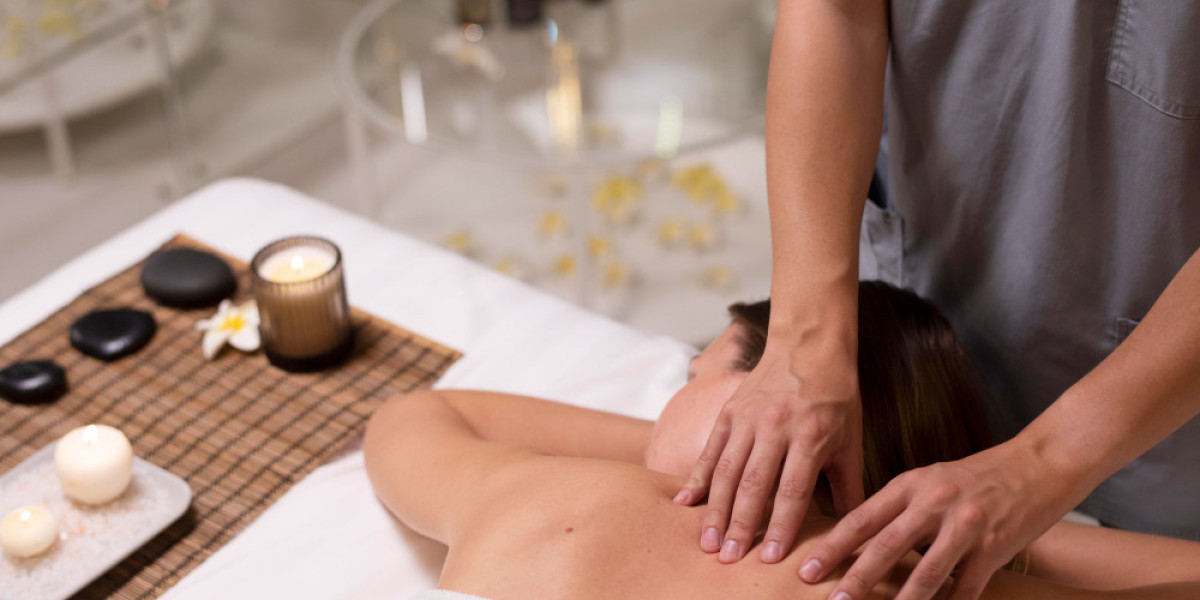In today’s fast-paced world, stress, muscle pain, and tension have become a part of daily life. Many people turn to medication or expensive treatments for relief, but there is a more natural, holistic approach – healthy Thai massage. This ancient healing practice has been used for centuries to restore balance in the body, ease tension, and promote overall well-being.
In this article, we’ll explore the benefits of Thai massage, how it works, and why it might be the perfect solution for those looking to relieve pain and stress naturally. We’ll explore Thai foot massage, a technique that boosts circulation and relaxation. You’ll gain the information needed to decide on incorporating Thai massage into your wellness routine.
The Origins of Healthy Thai Massage
1. A Tradition Rooted in Healing
Healthy Thai massage dates back over 2,500 years. It originated in India and was influenced by Ayurvedic medicine and yoga before becoming integral to Thai traditional healing.
Thai massage differs from Western massage in that it integrates stretching, acupressure, and energy work. Often called' lazy yoga', it allows practitioners to assist in moving the body into yoga-like positions for deep stretching and relaxation.
2. How It Differs from Other Massage Techniques
Unlike Swedish or deep tissue massage, which mainly focuses on kneading muscles, Thai massage is performed fully clothed on a floor mat. The therapist applies pressure along energy lines using hands, elbows, knees, and feet. This combination of stretching and acupressure releases tension and improves flexibility.
The Incredible Benefits of Thai Massage
1. Eases Muscle Pain and Tension
One significant benefit of Thai massage is its ability to relieve constant muscle pain. Some of the stretching techniques used in Thai massage can release muscle knots and improve circulation, which reduces soreness and stiffness.
2. Increases Flexibility and Mobility
Thai massage utilizes stretching techniques similar to yoga that promote flexibility and increase range of motion. It is great for athletes or anyone who feels stiff from sitting too long or not moving enough.
3. Boosts Circulation
In Thai massage, rhythmic pressure and stretching promote blood flow. This means the muscles and organs receive more oxygen and nutrients, which promotes overall health and injury recovery.
4. Reduces Stress and Anxiety
Today, stress ranks among the top contributors to health issues. A healthy Thai massage session promotes deep relaxation, lowers cortisol levels, and helps calm the mind. Numerous individuals experience a sense of rejuvenation and mental clarity following a session.
5. Enhances Energy Levels
Thai massage focuses on' Sen lines, ' which enhance energy flow in the body to increase vitality and reduce fatigue.
6. Aids in Digestion
Thai massage incorporates abdominal massage techniques that can enhance digestion and ease bloating. This makes it an excellent choice for individuals experiencing digestive issues.
Thai Foot Massage: A Key Wellness Boost
What is Thai Foot Massage?
Thai foot massage is a unique method that stimulates reflex points on the feet. These points relate to various organs and systems within the body, akin to reflexology. Applying pressure to them during a Thai foot massage fosters relaxation, boosts circulation, and enhances overall health.
Benefits of Thai Foot Massage
Enhances Blood Circulation: Pressure during a session boosts circulation, ensuring oxygen-rich blood flows throughout the body.
Alleviates Foot Discomfort: People on their feet long experience pain and swelling relief.
Improves Sleep Quality: Thai foot massage effectively enhances sleep patterns by alleviating stress and anxiety.
Promotes Wellness: This method stimulates reflex points, balancing organ functions and enhancing health.
How Often Should You Get a Thai Foot Massage?
To reap maximum benefits, consider getting a Thai foot massage once or twice weekly. Regular sessions promote relaxation and prevent foot discomfort recurrence.
What to Expect During a Healthy Thai Massage Session
Preparation and Setting
Typically, sessions take place on a mat or a low table.
Clients wear loose, comfortable clothing.
No oils or lotions are typically used.
The Massage Process
The therapist starts with gentle pressure along the body’s energy lines.
Deep stretches similar to yoga poses are included.
The therapist might employ their hands, elbows, knees, or feet to exert pressure.
The session concludes with relaxation exercises that will leave you feeling rejuvenated.
A session typically ranges from 60 to 120 minutes, tailored to individual needs.
How to Choose a Qualified Thai Massage Therapist
Advice for Locating a Professional
Look for qualified experts trained in Thai massage techniques.
Check reviews and seek recommendations.
Ensure the therapist follows hygiene and safety standards.
Share your needs and any medical issues prior to the session.
Conclusion
Healthy Thai massage is more than just a luxury – it’s a powerful tool for natural healing and relaxation. Whether you’re dealing with muscle pain, stress, or poor circulation, the benefits of Thai massage can improve your quality of life. Adding Thai foot massage to your routine can greatly enhance your well-being, making you feel rejuvenated from head to toe.
If you haven’t experienced Thai massage yet, now is the ideal opportunity to discover its amazing benefits. Locate a trusted therapist and make a move toward a healthier, more balanced life today!









